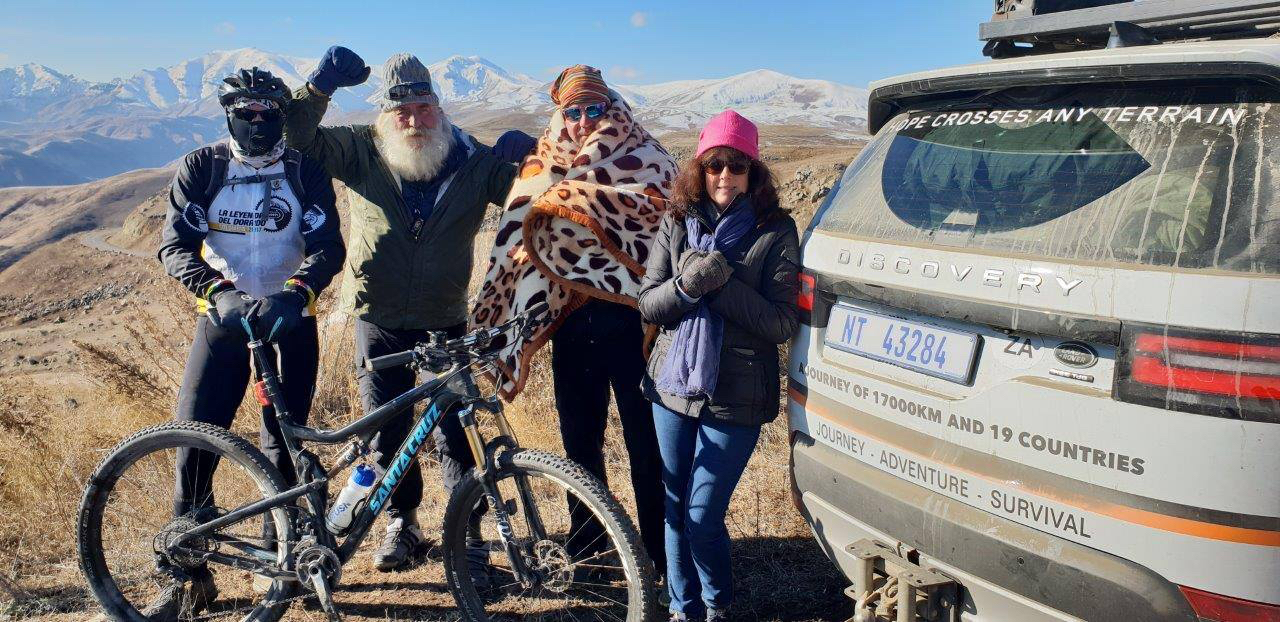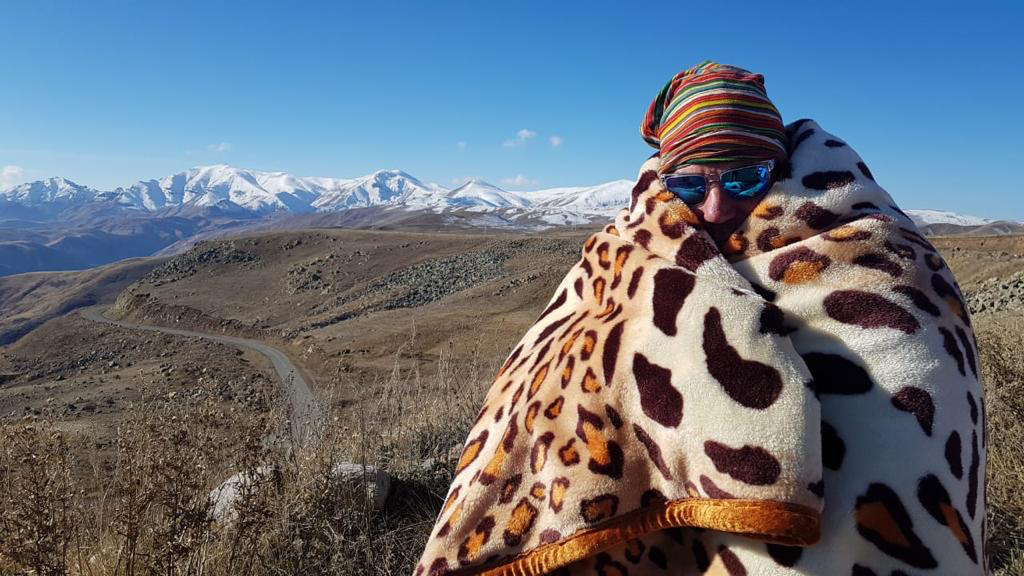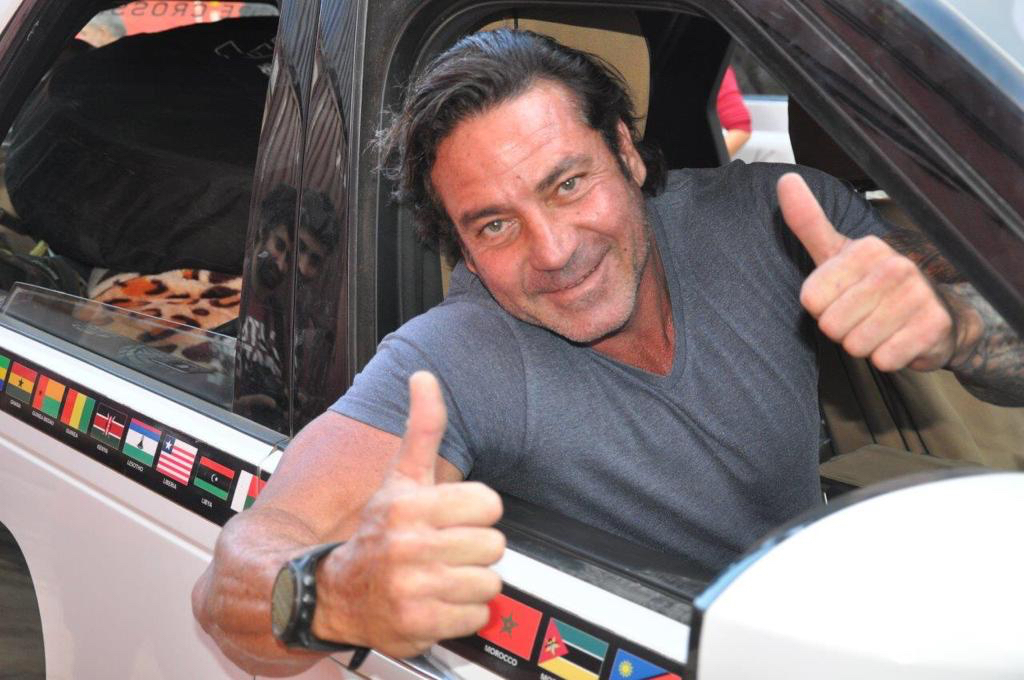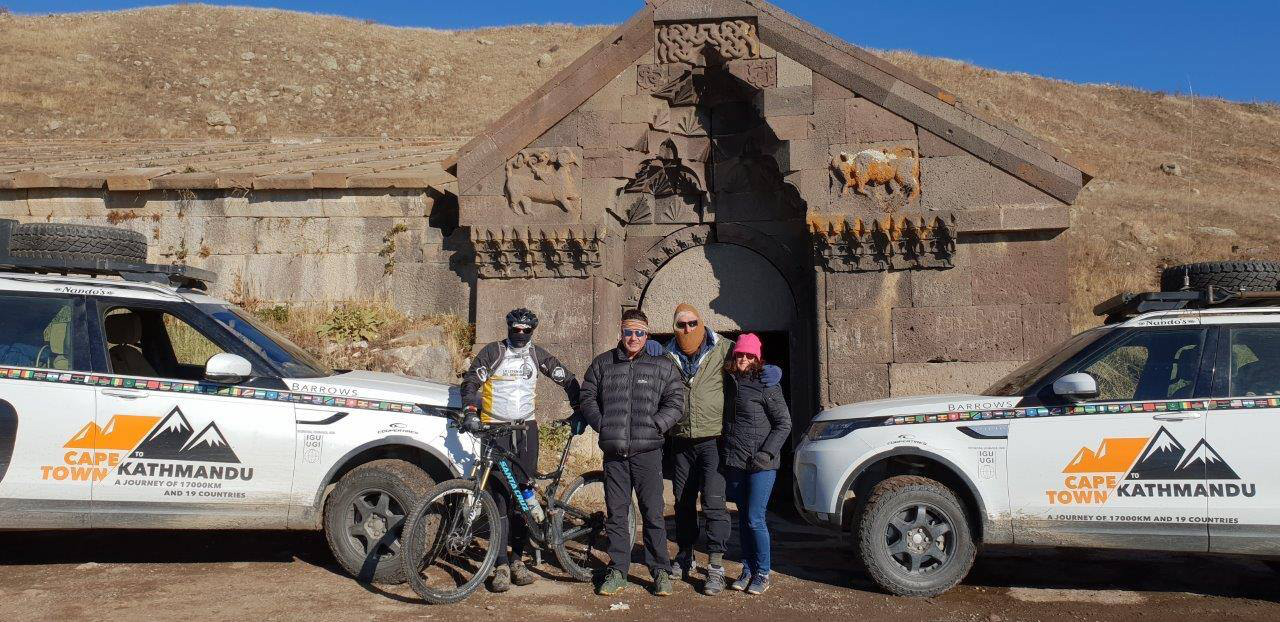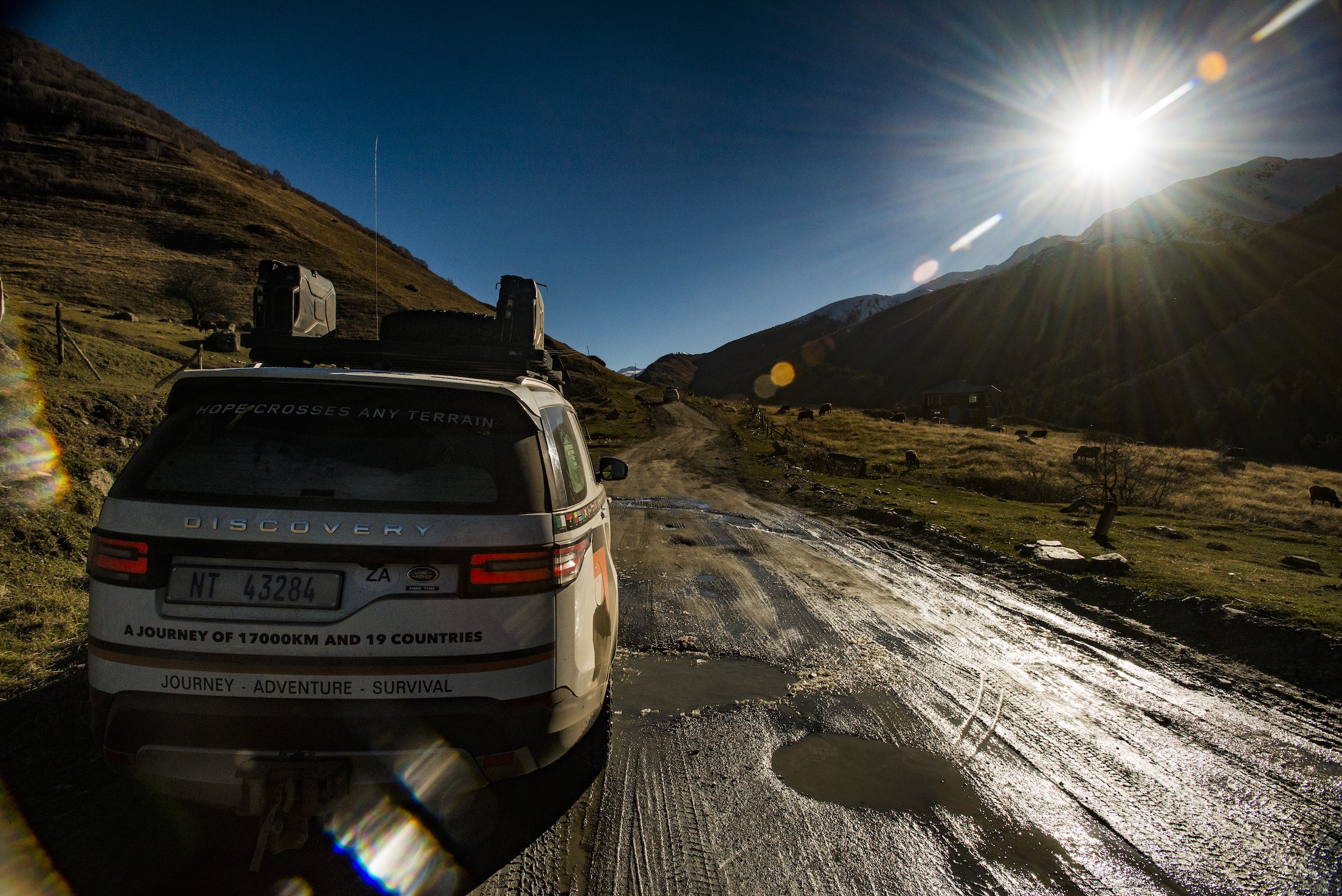New Transcontinental Expedition for Kingsley Holgate Team
With international travel restrictions easing after 20 months of Covid-19 lockdown, South Africa’s renowned Kingsley Holgate exploration team have revealed the launch date for their new, year-long transcontinental expedition.
Called the Defender Transcontinental Expedition and departing on 27 October from Cape Agulhas, it promises to be one of their most challenging geographic and humanitarian journeys to date: a 30,000-kilometre expedition through 30 countries from the southern tip of the African continent to the most northern point of Europe and then on to the mystical Isle of Anglesey in Wales.
“All adventurers will agree, it’s time to move again,” said well-known explorer and author Kingsley Holgate, who, with his experienced team, has already completed 39 gruelling expeditions to every country on the African continent and beyond, many of them world-firsts.
“This expedition has been almost two years in the making and significantly, it will be our 40th since 1992. In April last year, after months of preparation, we were about to set off on a humanitarian ‘journey of purpose’ from the UK to South Africa as part of the global launch of Land Rover’s new Defender. But then, along came Covid-19 and put all those plans on hold.
“So, optimistically, we decided to turn things around and add even more adventure to the route. This expedition will be the first Hot Cape to Cold Cape journey in recent years from South Africa’s Cape Agulhas to Norway’s Nordkapp in the Arctic Circle, which is the most northern point of Europe that can be reached by vehicle. It will certainly be a world-first for the new Land Rover Defender.
“That’s just one goal. All our expeditions have the principle of ‘saving and improving lives through adventure’, so we’re keeping the journey-of-purpose theme and right from the start, will conduct humanitarian work to assist 300,000 people in sub-Saharan Africa. To offset the expedition’s carbon footprint and help combat climate change, the journey will also be linked to the establishment of spekboom thickets and tree planting along the route.”
From Egypt, the expedition will cross the Mediterranean to Greece and tackle demanding terrain on its northerly journey through Eastern Europe, Russia, Finland and Norway to reach Nordkapp.
The route then turns south through Sweden, Denmark and Western Europe, before finally crossing the Channel into the UK and ending on the Isle of Anglesey in Wales, where human occupation dates to the time of the Druids, and where the first Land Rover design was sketched in the sands of Red Wharf Bay by engineer Maurice Wilks in 1947.
The core Holgate team will be using two expedition-kitted P400 Defenders for the entire journey, with other crew members joining along the way in their own vehicles. The two Defenders are already well-travelled, having completed the Holgate’s 80-day, 16,000-kilometre Mzansi Edge Expedition last year that tracked the entire outline of South Africa, delivering humanitarian aid to remote communities during the height of South Africa’s lockdown.
“We’re not setting out to break speed records on the Hot Cape to Cold Cape section of the journey, so it’s not going to be a straight-line dash,” explained expedition leader Ross Holgate. “We’re going to seek out demanding driving conditions and tough 4x4 routes to reach iconic geographic points of interest and really put the 21st century technical capabilities of the new Defenders through their paces.
“There are going to be some extreme challenges. The route through central and east Africa will be at the height of the ‘big rains’, so we’re expecting very wet and muddy conditions for days on end. Crossing the dry and hot Sahel and Nubian Desert through the Sudan and into Egypt will also be very testing for both man and machine. There are also geopolitical issues to face, especially in Ethiopia and the Sudan. And then, there is the route through eastern Europe to Norway; that’s going to be an all new, incredibly diverse and stimulating experience for our Africa-based expedition team, whose last transcontinental journey was from Cape Town to Kathmandu in 2018.
“Yes, it’s not an ideal time to travel across the globe but with the entire expedition team now fully vaccinated, we have to do it to get out from under the Covid-19 cloud. So many people in Africa are in desperate need of humanitarian relief and many others are craving a good, old-fashioned Land Rover adventure story after so many months of travel restrictions.”
African symbolism remains a key focus of this latest Holgate expedition. As always, their well-travelled traditional Zulu calabash has prime spot in the Defenders and will collect seawater from where the Atlantic and Indian Oceans meet at Cape Agulhas, the expedition’s mid-point at Alexandria in Egypt on the Mediterranean, and the Norwegian and Barents Seas at Nordkapp. It will be symbolically emptied into the Irish Sea at the expedition’s endpoint at Red Wharf Bay in Anglesey, Wales.
Four iconic ‘isivivanes’ (stone cairns) will be built at key points along the expedition route: Cape Agulhas, Alexandria, Nordkapp and Anglesey.
The expedition will also be carrying a new Scroll of Peace and Goodwill from the southern point of Africa to the northern point of Europe and on to the United Kingdom, which will collect hundreds of messages of support from citizens of 30 countries for a new and more hope-filled post-Covid world.
Follow the expedition on Facebook : KingsleyHolgateFoundation
ENDS







